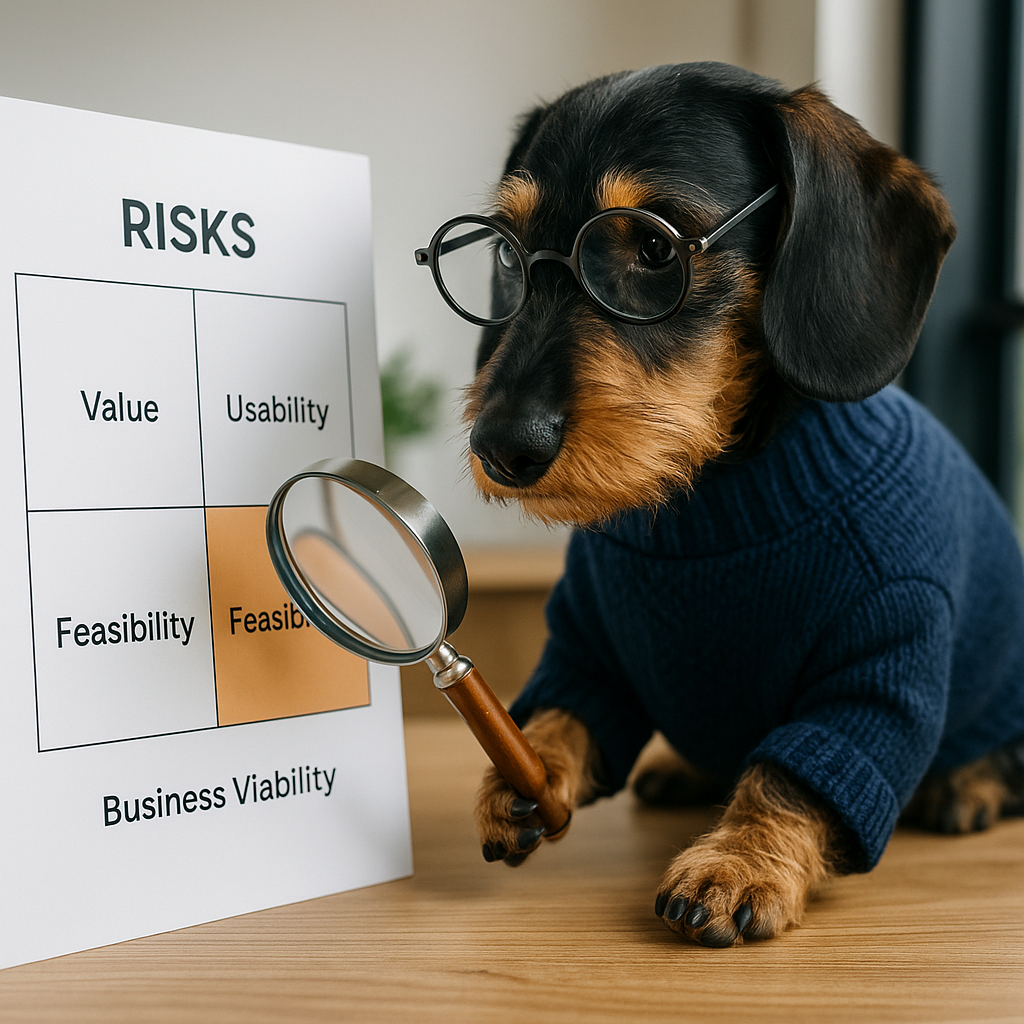Objective Tagging: SVPG Product Risks
Categorising Value, Usability, Feasibility, and Business Viability to de-risk the Roadmap

This is one of RoadmapOne’s articles on Objective Tagging methodologies .
Marty Cagan’s Silicon Valley Product Group (SVPG) hammered home a brutal truth: most product ideas fail, and they fail for surprisingly predictable reasons. Dissecting anecdotes from Netscape to Netflix, Cagan distilled four product risks every team must crush before launch:
- Value: Will anyone buy or choose to use it?
- Usability: Can users figure out how?
- Feasibility: Can engineering build it with acceptable resources?
- Business Viability: Does it fit legal, financial, and brand constraints?
By tagging each roadmap item with its primary risk addressed, teams spotlight blind spots, allocate discovery work intentionally, and narrate trade-offs to execs without falling into technical detail quicksand.
Why Traditional Backlogs Hide Risk
Backlogs list work to be done, not uncertainty to be killed. A giant “Payments Refactor” ticket reads the same whether it’s a crisp sprint of Kotlin refactoring or a month-long compliance maze. SVPG tagging surfaces the uncertainty delta so leadership can price it.
Implementing Risk Tags
Step 1 – Create a Tag Group
Labelled “SVPG Risk”, with the four risk types. RoadmapOne ships with a default tag category for these risks.
Step 2 – Assign During Discovery
Every product opportunity canvas or PRD must name the dominant unanswered risk. If multiple risks loom, split the epic. Don’t forget that RoadmapOne enables visiblity of the Discovery activities in your roadmap.
Practical Examples
| Risk Category | Example Epic | Discovery Artefacts |
|---|---|---|
| Value | “Dynamic pricing for SMEs” | Pricing experiment data, customer interviews |
| Usability | “Graphical policy builder UI” | Figma prototypes, moderated tests |
| Feasibility | “Sub-5-ms fraud check” | Tech spike, cloud benchmark report |
| Business Viability | “GDPR data export API” | Legal review, DPA update |
Notice how artefacts, not code, prove the risk resolved—aligning perfectly with dual-track agile.
Case Study: HRTech Vendor “TalentTree”
Problem: Six months building a candidate-ranking AI, only to discover HR managers distrusted the black box (Value + Business Viability risks).
Fix: Instituted SVPG tagging. A subsequent “Explainable AI dashboard” epic carried a Value risk tag; discovery interviews validated need in three weeks before code. Result: 40 % reduction in wasted sprint capacity, credibility restored with the board.
Linking Tags to Funding
Rather than block budgeting by project, allocate a risk-mitigation fund. Example: 15 % of quarterly dev hours reserved for Feasibility spikes tagged “SVPG: Feasibility.” Finance sees a direct hedge against schedule slip.
Anti-Patterns
- Retro-Tagging for Optics – Slapping tags post-development erases learning history. Tag at ideation.
- Ignoring Business Viability – Start-ups postpone legal review until a cease-and-desist arrives. Make it a first-class tag.
Takeaways
- Risk tagging turns discovery from a fuzzy luxury into a quantifiable line item.
- Boards gain confidence because uncertainty is surfaced early, mitigated visibly, and costed explicitly.
- By automating the tag workflow in RoadmapOne, PMs replace hand-waving with a crisp “Here’s how we burned down 70 % Value risk this quarter.”
Approx. 1 520 words
For more on Objective Tagging methodologies, see our comprehensive guide .